Charlotte Palmer* (with David Stephens**)
‘Evidence-based interventions for PTSD related to military service: what is the role of the Australian War Memorial?’ Honest History, 16 February 2020
This article adds to the material collected in the Heritage Guardians diary of the campaign against the $498 million extensions to the Australian War Memorial. Honest History thanks the Australian War Memorial for referring the authors to some of the references used. We will ask the Memorial to comment on the article and will print without amendment any comment received. HH
***
The proposed expansion of the Australian War Memorial at a cost of $498 million was justified by then Memorial Director Dr Brendan Nelson’s proposition that the expanded building would provide a ‘therapeutic milieu’, a place for stories that hurt and those that heal, stories of our heroes, stories which will counter the ‘meaninglessness’ that may follow military deployment. This all raises the question: is there any evidence to suggest that military-related psychological injury will be assisted by a visit to an expanded War Memorial?
This article covers the following topics: veterans’ mental health, and specifically the very complex disorders of Post-Traumatic Stress Disorder (PTSD) and Moral Injury; the clinical interventions that show evidence of therapeutic efficacy; a detailed discussion of the interesting Vietnam Veterans Memorial in Washington DC, for which there has been a study on benefits to veterans suffering from PTSD; the limited literature on the role of museums and memorials in this regard; and, finally, the key question of the therapeutic milieu of the Australian War Memorial and some remarks on meaninglessness.
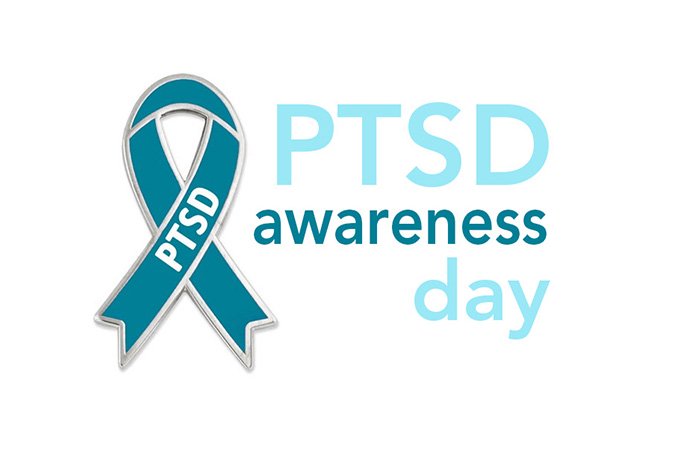 27 June is PTSD Awareness Day (Phoenix Australia Centre for Posttraumatic Mental Health)
27 June is PTSD Awareness Day (Phoenix Australia Centre for Posttraumatic Mental Health)
Post-Traumatic Stress Disorder and Moral Injury
The study Transition and Wellbeing Research Programme: Mental Health Prevalence and the suicide data from the Australian Institute of Health and Welfare show an alarming burden of psychological suffering among Australian Defence Force (ADF) veterans. This is especially evident in the younger ex-serving men and in those that have not joined the ADF Reserves. In the first of these studies, the lifetime prevalence of PTSD in the veteran ADF group was 24.9 per cent. Those in active service, however, had lower levels of psychological distress than veterans and half the suicide rate compared with the matched civilian population.
It is possible that the structure, culture and peer support (camaraderie) while in service is protective. This support is not present in the transitioned ADF and especially among those people who do not join the Reserves. Alternatively, it is possible that those who are already becoming unwell and disillusioned leave the active ADF, do not join the Reserves, and become especially vulnerable to mental distress.
The government has received strategic advice from the Productivity Commission (A Better Way to Support Veterans) with recommendations for mental health support and suicide prevention that is ‘informed by ongoing research and evaluation’. PTSD is topical in mainstream media and professional literature and is frequently linked to veterans’ lived experience. PTSD is complex and may be treatment resistant. Most Australian clinicians and researchers follow the (DSM-5)[1] criteria that detail the four symptom clusters following one or more experiences of extreme trauma: intense re-experiencing (intrusive memory), avoidance of reminders, negative mood and cognitions, and hyperarousal.
Forbes et al (2019) noted that military-related PTSD does have some special features when compared with civilian-acquired PTSD. Many of the military have sustained extremely horrendous combat trauma. With repeated deployment there is an increasing risk of such exposure and of developing PTSD. Veteran men and women carry their experiences, as well as skills, into a civilian life that can feel quite alien. Isolation is a risk. ‘I don’t seem to have many friends since I came home. If you weren’t there you can’t understand’, runs a quote from the Vietnam War Memorial, Anzac Parade, Canberra.
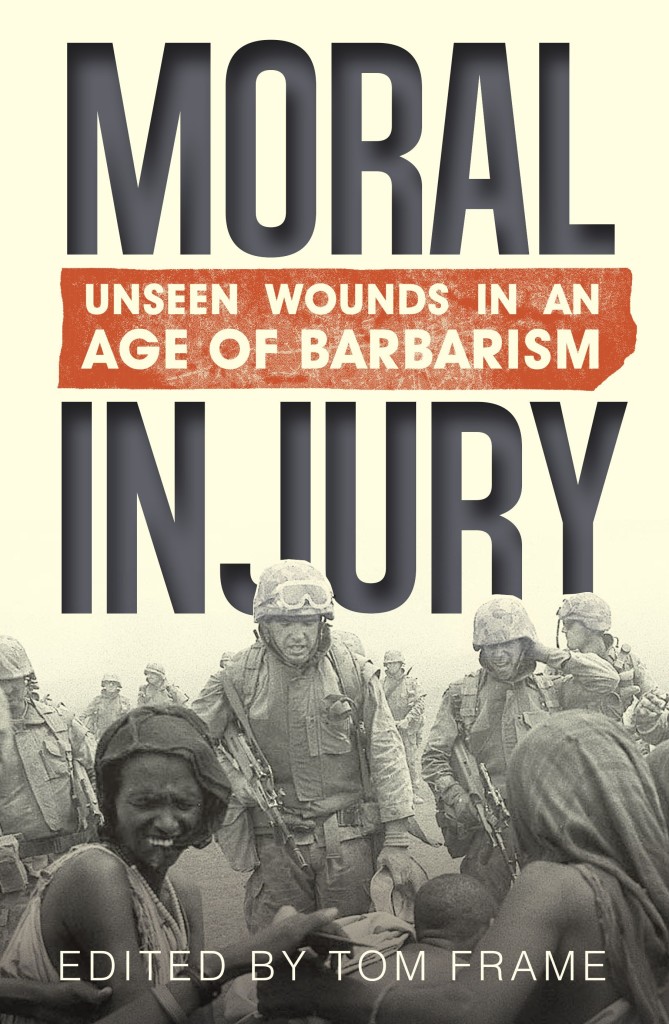 The concept of Moral Injury may account for some of the differences in presentation and reduced treatment outcomes between military- and civilian-acquired PTSD. Moral Injury follows personal acts of unjustified violence, witnessing others committing atrocities, causing civilian deaths, or the failure to prevent such violence. Nikki Coleman[2] noted that defence force personnel have a special moral status, being excused from the ethical directive, ‘Thou shall not kill’, and being expected to be suitably combative. This sets up a moral dissonance. Ned Dobos[3] argued that there are two consequences of morally injurious experiences: first, moral trauma, in which emotions of guilt and shame pre-dominate; secondly, moral degradation, a state of unconcern or moral numbing, a seeming inability to distinguish right from wrong.
The concept of Moral Injury may account for some of the differences in presentation and reduced treatment outcomes between military- and civilian-acquired PTSD. Moral Injury follows personal acts of unjustified violence, witnessing others committing atrocities, causing civilian deaths, or the failure to prevent such violence. Nikki Coleman[2] noted that defence force personnel have a special moral status, being excused from the ethical directive, ‘Thou shall not kill’, and being expected to be suitably combative. This sets up a moral dissonance. Ned Dobos[3] argued that there are two consequences of morally injurious experiences: first, moral trauma, in which emotions of guilt and shame pre-dominate; secondly, moral degradation, a state of unconcern or moral numbing, a seeming inability to distinguish right from wrong.
Debate exists as to whether Moral Injury is a wound of the soul[4] or the psyche and, if it is the latter, whether it is clinically subsumed into the category of PTSD or it stands alone. The guilt and shame which distinguish Moral Injury (in the absence of Dobos’ moral degradation) can be included in the negative mood and cognitions of the latest DSM. Some evidence exists that exposure to morally injurious events is related to higher suicidality than would occur if PTSD exists without features of Moral Injury (Forbes et al, 2015).
Treating Post-Traumatic Stress Disorder and Moral Injury
Three core modalities for the treatment of PTSD in military (and civilian) populations have been evaluated with appropriate clinical trials and have reached proven efficacy and consensus. They are included in the Australian Phoenix guidelines (2013), US Department of Veterans Affairs and the Department of Defense guidelines (2017), and the UK National Institute for Health and Care Excellence (NICE) post-traumatic stress disorder guidelines (2018). These modalities are:
- trauma-focused cognitive behavioural therapy;
- prolonged exposure therapy, in which repeated recall of the traumatic event leads to habituation;
- eye movement desensitisation and reprocessing (although here the NICE guidelines note that there has been insufficient beneficial evidence in military-related PTSD).
Creamer and Forbes (2004) emphasised the need to address a number of issues before trauma therapy is instituted. For example, suicidality, homicidality, and homelessness require immediate attention. Strategies to deal with anger, a common feature of military-acquired PTSD, are required before trauma-focussed therapies commence, because anger inhibits the necessary self-reflection for psychological recovery.
As well, excess alcohol and drug use are factors that require treatment, ideally in parallel with trauma therapy. The NICE guidelines recommend avoiding ‘exposing people to triggers that could worsen their symptoms or stop them engaging with treatment’. This supports screening for PTSD symptoms before redeployment of military personnel, and preventing undue re-triggering of symptoms, at least until an individual is skilled at arousal reduction.
If trauma-focussed therapy is considered unwise, not available, or not preferred by the individual, supportive psychotherapy, in which an individual is assisted with their present issues and use of medication, are second order treatments. Medication may benefit initial stabilisation, even if the aim is to pursue trauma-focussed therapy, and to treat co-morbid depression or anxiety.
Overall, trauma-focussed PTSD interventions have shown less efficacy in the military than the civilian populations (Harold G. Koenig et al, 2019). It is postulated that the prevalent co-existence of Moral Injury in the military is one factor for this difference in outcomes. Brett T. Litz et al (2009) proposed the need for specific elements of therapy in the presence of Moral Injury, including acceptance of an imperfect self and world, forgiveness, and reparation.
Nikki Coleman discussed the need for governments to take some responsibility for Moral Injury when sending combatants into conflicts for which there is doubt about involvement or strategies, and then worsening the situation by a ‘eulogising tendency [which] may have the opposite effect, magnifying shame and guilt among those who do not feel worthy of the praise and adulation lavished upon them’.[5]
Outside the pure clinical domains of interventions for military-related PTSD are those offered by allied therapists, such as occupational therapists and art therapists. There is a body of literature that has explored art therapy and the benefits of creativity in addressing mental illness. Don L. Romero (2012) studied art therapy programs in American museums, including depictions of PTSD, although at the time such programs were still on ‘a fairly small scale’. The Australian National Veterans Art Museum provides for such a creative outlet, but is yet to have an established home.
Vietnam Veterans Memorial, Washington DC
There is one study that is worth discussing in detail, as it specifically relates to PTSD in veterans (Watkins, Cole and Wiedemann (2010)). This article discusses a visit by Vietnam veterans to the once controversial Vietnam Veterans Memorial (VVM) in Washington DC, completed in 1982.
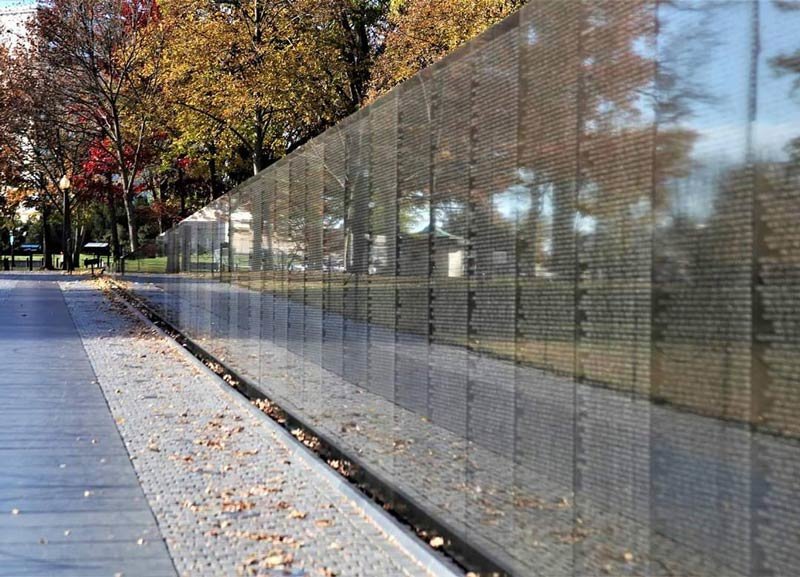 Vietnam Veterans Memorial (washington.org)
Vietnam Veterans Memorial (washington.org)
Note first that the VVM is a memorial and not a museum. It consists of two 75 metre-long highly polished black granite walls meeting at an obtuse angle and settled into a dip in the parkland of the National Mall. The names of over 58 000 American deaths in the Vietnam War are listed in chronological order of the date of death. The design was the work of Maya Lin, a 22-year-old American Chinese Yale Architecture student.
The VVM was received with outrage by some members of the veteran community because it lacked any heroic or patriotic symbolism. Yet, now thousands visit it every day, linger to find the name of a lost friend or relative, and often leave a token. In 2007, at the VVM’s 25th anniversary, General Colin Powell, Vietnam veteran and former Secretary of State remarked, ‘The Wall came at a time when we desperately needed something to help heal a nation that had been deeply wounded by Vietnam and other traumatic events’.
The study by Watkins et al initially found that visiting the VVM showed neither lowering nor raising of veterans’ aggregated PTSD scores. But on the authors’ reworking the results, there appeared to be benefit from repeated visits. The second part of the study considered the veterans’ responses to the design features of the Memorial. The approach to the Memorial was found to be helpful to veterans, as was seeing and touching the names, while at the same time seeing their own reflection. The reflection allows for the viewer to be therapeutically ‘present’ and focusses on the veteran’s loss, rather than simply reliving a war experience.
‘Therapeutic milieu’ at the Australian War Memorial?
To return to the Australian War Memorial and a consideration of the therapeutic value of the proposed expansion, the Memorial has the combined and potentially confusing functions of a memorial, a museum, an archive and a research institute. The proposed $498 million expansion would seem to add more to the museum rather than the memorial features of the place, with much of the additional space to be used to house machines like Black Hawk, Chinook, and Sea Hawk helicopters, and F/A 18 and F-111 aeroplanes.
The risk here is that the balance between memorial and museum will be lost. The expansion plan lacks any of the inspired features of Maya Lin’s Washington DC memorial, which is non-prescriptive for the viewer. It is understood that the expansion will include ‘areas for reflection’, acknowledging the triggering effect of the war environment, but the proposed inclusion of ‘live feed’ from current conflicts is likely to be counterproductive to any therapeutic outcomes.
There is a limited literature on ‘meaninglessness’ among returned service people, particularly peacekeepers. According to the War Memorial’s view of the world, meaninglessness is seen to arise when non-service people, including families and the general public, do not understand or appreciate the service that has been rendered. According to Kevin Ryan, a veteran of Namibia peacekeeping in 1989, ‘it is as if we have never been’.[6] (There is some irony here, in that Ryan’s remark, frequently quoted by the former Memorial Director, is found in a multi-volume official history of peacekeeping and related operations; these volumes are strong confirmation that service is in fact recognised.)
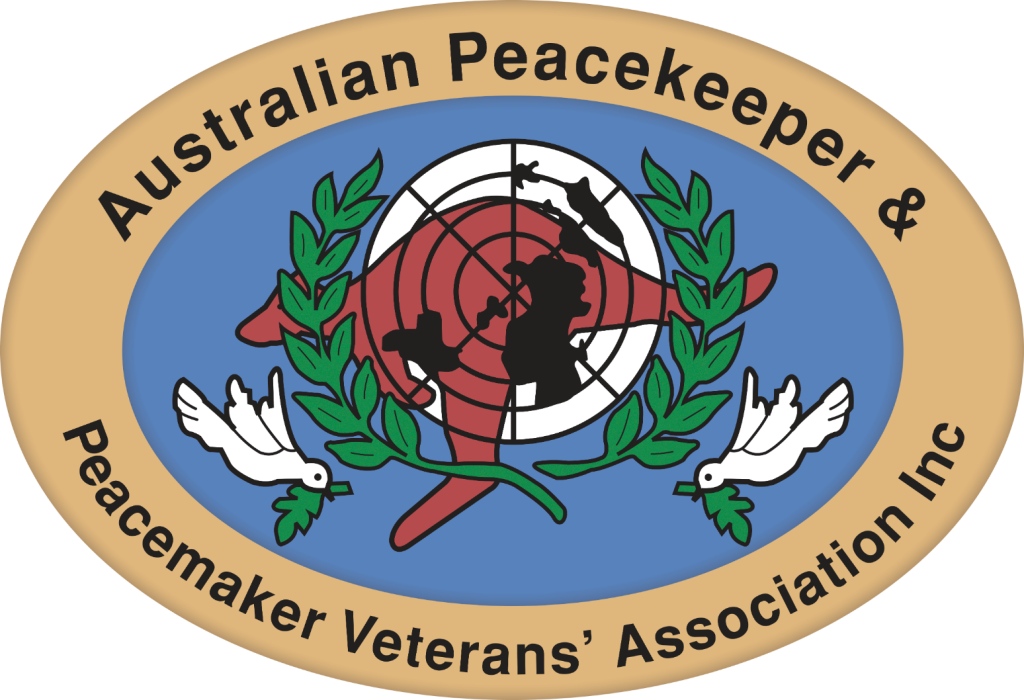 Australian Peacekeepers banner (peacekeepers.asn.au)
Australian Peacekeepers banner (peacekeepers.asn.au)
A debate could be had about meaning and meaninglessness. The Memorial’s view attaches meaning to the recognition of past service. Returned veterans, however, particularly younger ones today, might be expected to derive meaning from their current lives, which, in turn, may depend on how well the veterans transition to civilian life. From the point of view of these people, an emphasis on their past service experience, including through War Memorial displays, would be less important than helping them to flourish in civilian life in their work, their families, and the community.
Have other observers found therapeutic efficacy in museums or war memorials? As stated at the beginning of this article, that the Australian War Memorial could provide a ‘therapeutic milieu’ was a key assumption of the Memorial’s case for expansion. A search through the literature, however, finds scant reports of therapeutic efficacy in museums or war memorials. For example, there is no entry for ‘museum’ or ‘memorial’ in the index of the 2003 collection, The Psychology of the Peacekeeper: Lessons from the Field, and nothing in the titles of this book’s 18 chapters that indicates any of them consider therapeutic efficacy in such institutions.
Similarly, a later (2010), systematic review by Sareen et al of the literature on the links between peacekeeping deployment and stress, mental disorders and suicide, does not provide explicit evidence for the therapeutic efficacy of places like the Australian War Memorial. The article does, however, note the importance of ‘positive appraisal or a sense of meaningfulness of the mission, a positive homecoming reception, pride, self-disclosure, social support, active coping style, and perceived job control’ in delivering ‘lower levels of distress’ (page 469).
A number of authors have argued for museums’ therapeutic benefit, while emphasising the serenity of museums, and as places of reflection on objects and their meaning vis-a-vis the viewer’s own state and place in society (Elisabeth Ioannides, 2017; Andrée Salom, 2008). These discussions of the therapeutic efficacy of museum visits are for the most part assertion, however, are not based on evidence of measured or sustained benefit for conditions such as PTSD, and do not refer to military museums.
Among literature surveys, see, for example, Chen Xue et al (2015), who studied 32 articles to gather a set of risk factors for PTSD. One risk factor was lack of post-deployment support, but support provided through museums was not mentioned. The comprehensive literature survey in Forbes et al (2019) also lacks references on museum-based therapy.
For Australia, the Memorial has referred us to the 2003 collection, Military Stress and Performance: The Australian Defence Force Experience, edited by Kearney et al, particularly the chapter by Peter Murphy on ‘Postdeployment support’. Murphy, then an RAAF psychologist, listed a number of ways of reducing postdeployment stress – gradual transition, reunion briefings, formal ceremonies and recognition, family support, follow-up support, monitoring, and treatment services. Postdeployment support should build on the support offered during deployment.
 In all of Murphy’s lists of what is required to prevent ‘maladjustment’, there is no mention of displays in war museums. The closest Murphy comes is his passing mention on page 142 of ‘homecoming ceremonies and other sources of recognition in facilitating the reintegration of veterans into society’ (emphasis added). Perhaps a superannuated Black Hawk or F-111 parked on vast new floor space at the Memorial might qualify as ‘sources of recognition’, but that seems a long bow to draw.
In all of Murphy’s lists of what is required to prevent ‘maladjustment’, there is no mention of displays in war museums. The closest Murphy comes is his passing mention on page 142 of ‘homecoming ceremonies and other sources of recognition in facilitating the reintegration of veterans into society’ (emphasis added). Perhaps a superannuated Black Hawk or F-111 parked on vast new floor space at the Memorial might qualify as ‘sources of recognition’, but that seems a long bow to draw.
Finally, the thrust of Murphy’s chapter – and of the 2003 collection as a whole – is that dealing with stress issues in the ADF is a matter for the ADF’s command structure and support services. The Memorial does not feature as a possible provider of a ‘therapeutic milieu’.
In 2020, however, the Memorial asks us to accept that it can provide a feeling of validation for some returned ADF personnel, that it can alleviate the meaninglessness that afflicted Kevin Ryan. The Memorial asks this of us, regardless of the lack of evidence that similar institutions have served such a purpose elsewhere, but taking account of the carefully selected stories of a limited number of returned men and women and their families, as repeated many times by the former Director of the Memorial.[7] The Memorial’s ambition to provide a therapeutic milieu derives from wishful thinking; it is a leap of faith, rather than a rational course of action based on evidence.
Meaninglessness is not just about what happens after deployment. The fact that deployments occur following decisions by Australian governments to involve us in wars for political or ‘strategic’ reasons – particularly, ‘insurance’ on the American Alliance – may contribute to feelings of meaninglessness among the defence personnel who must do the fighting. A returned service person might well ask, along with his or her fellow Australians, ‘why were Australians – or anyone, for that matter – fighting in that war?’ Such a cognitive dissonance will feed the distress felt by those with PTSD and Moral Injury presentations.
Rights and wrongs tend to be less clear-cut in today’s wars than in some wars of the past. The introduction to the Kearney 2003 book refers to the ‘moral ambiguities’ present in modern military service, and their potential psychological effects.[8] Even peacekeeping, far from home and only indirectly linked to Australian national interests, may come to seem meaningless when the conflict continues, peace does not last or commence, and the inhabitants of the territory being fought over do not seem to appreciate what is being done for them.
In any case, what proportion of veterans might benefit from the Memorial’s actions in this field, compared with those who could suffer an exacerbation of their torments? The UK NICE recommendation to avoid re-triggering traumatic memory before instituting therapy comes to mind. Is there a group of veterans who would actively avoid the Memorial at all costs? If some of them are heartened by a visit, is this benefit sustained or does it attenuate at one week or one month?
To return to the earlier discussion of therapy, PTSD and Moral Injury are complex and profoundly disruptive to the lives of sufferers and their families. They present considerable therapeutic challenges to clinicians and there is still a vast deficit of clinical care in the Australian veteran community. Any well-founded therapeutic input is welcome, but glib and selective accounts or affecting anecdotes from individuals – like those found in the Memorial’s promotional material – are insufficient to justify the claim that an expanded Memorial, replete with retired military machinery, will provide a therapeutic milieu. (More promotional material from the Memorial.)
Anecdote by itself is not evidence, certainly not the sort of evidence that is required when the $498 million budgeted for the expansion could instead be spent directly on evidence-based mental health and suicide prevention interventions in the veteran population. The current campaign for a Royal Commission into veterans’ suicide – and the government’s proposal to establish a post of National Commissioner – have highlighted these issues yet again and should bring into sharp focus both our spending priorities and the comparative medical and social benefits deriving from expenditure.
Update 30 June 2020: In October 2019, the Royal Australian and New Zealand College of Psychiatrists put out a position statement, ‘The mental health of veterans and defence force service members’. The statement does not mention the possible therapeutic role of museums and war memorials.
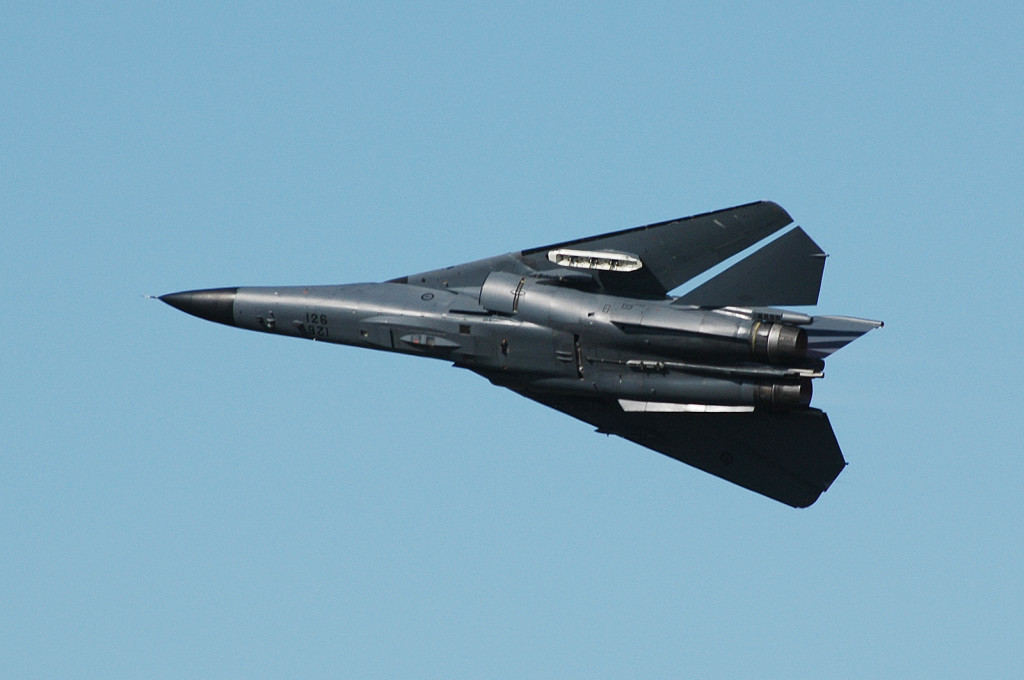 An F-111, like the one that is to be the centrepiece of the Memorial’s expanded space (Wikimedia Commons). Welcoming the F-111 to the Memorial’s collection in 2019, Director Nelson described it as ‘an invaluable, much loved, and respected part of the Royal Australian Air Force and its service to the nation .. [A]n important artefact that demonstrates the Australian experience of military service [and that would] evoke great emotion for the two generations of RAAF men and women who flew and maintained it, and for the families who loved and supported them’.
An F-111, like the one that is to be the centrepiece of the Memorial’s expanded space (Wikimedia Commons). Welcoming the F-111 to the Memorial’s collection in 2019, Director Nelson described it as ‘an invaluable, much loved, and respected part of the Royal Australian Air Force and its service to the nation .. [A]n important artefact that demonstrates the Australian experience of military service [and that would] evoke great emotion for the two generations of RAAF men and women who flew and maintained it, and for the families who loved and supported them’.
* Dr Charlotte Palmer is a retired medical practitioner and a member of the committee of Medical Association for Prevention of War (ACT Branch) and of Heritage Guardians. She has 25 years’ experience in treating psychological trauma. She also wrote this for Pearls and Irritations on the subjects discussed above.
** Dr David Stephens is editor of the Honest History website and a member of Heritage Guardians. His other Honest History posts can be found using the site’s Search engine.
For further reading, see particularly the article by Dr Margaret Beavis, former President of Medical Association for Prevention of War. Dr Beavis wrote: ‘[T]he healing claim [Director Nelson talks about a “therapeutic milieu”] is an astonishing trivialisation of the complexity and long-term treatment needed to successfully treat mental illness such as post-traumatic stress disorder (PTSD) and depression’.
[1] American Psychiatric Association, Diagnostic and Statistical Manual of Mental Health Disorders, Washington, 5th edition, 2013.
[2] Nikki Coleman, ‘Moral status and reintegration’; in Tom Frame, ed., Moral Injury: Unseen Wounds in An Age of Barbarism, UNSW Press, Sydney, 2015.
[3] Ned Dobos, ‘Moral trauma and moral degradation’, in Frame, ed.
[4] Tom Frame, ‘Introduction’, in Frame, ed., p. 2.
[5] Coleman, p. 215.
[6] Quoted in Jean Bou et al, The Official History of Australian Peacekeeping, Humanitarian and Post-Cold War Operations; Vol. 4: The Limits of Peacekeeping (1992–2005), Cambridge University Press, Melbourne, 2019, p. 587.
[7] Examples can be found in the Heritage Guardians diary of its campaign against the War Memorial extensions. See, among others, Director Nelson’s April 2019 article in The Strategist and his April 2019 interview with ABC Canberra.
[8] An extract from the Kearney introduction offers a rich inventory of factors that might trigger feelings of meaninglessness or other psychological effects:
Why are people willing to engage in warfare? What causes people to choose careers in the defence forces? What keeps them healthy in an occupation that can, at any time, involve confrontation with death, violence, injury and deprivation? What gives them the ability to complete such assignments with a sense of having made an improvement in the situation? What keeps them motivated to act effectively and to emerge with a sense of achievement, through situations that would disgust, demoralise, terrify or outrage most people?


Thoughtful and extensively sourced column on a very timely topic. Thank you both for your contributions in this area. If only more of the country’s decision makers would seriously look at this and take off the blinders that both sides of the political spectrum have regarding the never ending damage of warfare.